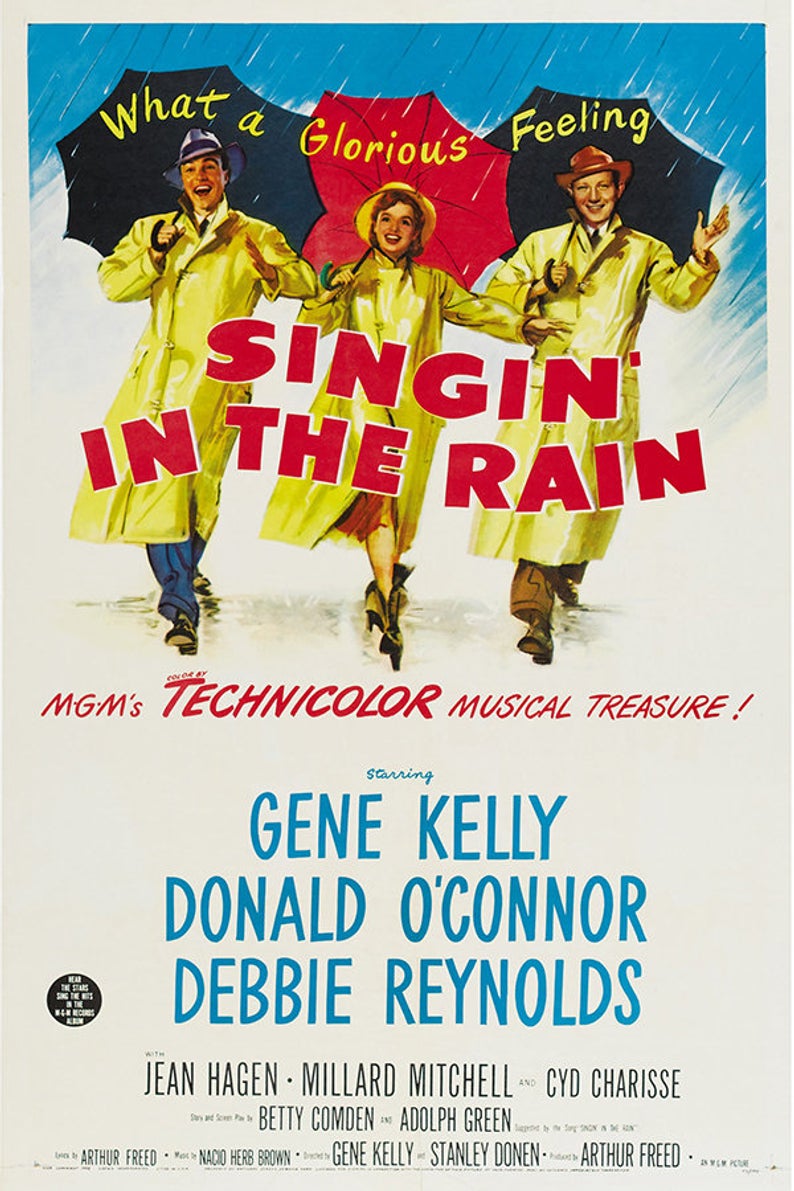Film Review: Singin’ in the Rain (1952)



Singin’ in the Rain is one of those movies that I’ve known about my entire life – could even sing part of the title song – but had never seen. We’ve all got those kinds of movies – the ones we always meant to watch, but somehow never found the time or opportunity to do so. The famous dance number is so iconic that, in a way, I’ve always felt as though I’d seen the entire film based on my familiarity with that one scene. I found out, however, that there’s a whole lot more to Singin’ in the Rain than a man twirling about through a downpour.

I’m not generally drawn to musicals. I’m not opposed to them on any kind of critical level, but when choosing what to watch, they often get set aside in favor of something else. I was, however, very much looking forward to Singin’ in the Rain, which by all accounts seems to be the standard for the genre. The reason it bears this distinction is simple: it really is that good. Its meta-Hollywood story and unearthly physicality force it to be noticed. In an era when musicals were beginning to run their course, Singin’ in the Rain jumps out as fresh and innovative.

Gene Kelly stars as Don Lockwood, a silent era movie star during the industry’s tumultuous shift to “talkies.” He’s set to star in one of these new-fangled films with his usual costar Lina Lamont (Jean Hagen) but the fact that she can’t sing, dance, or act gets in the way (in fact, the studios do their damndest to keep her voice hidden due to its grating nature). Don “meets cute” with an aspiring actress named Kathy Seldon (Debbie Reynolds) who, along with his best friend Cosmo (Donald O’Connor), hatch a plan to make a movie that will wow skeptical audiences.

Plot-wise that’s about it. But, of course, it’s the musical numbers that really get things cooking. Kelly, Reynolds, and O’Connor are powerhouses of kinetic energy and impossible steps. O’Connor takes things a step further with his rough and tumble mixture of acrobatics and falls that would have put most 1950s pro-wrestlers to shame. With dancing this spectacular and songs this catchy, Singin’ in the Rain is often more than a sum of its parts. I’ll warn you, the rainclouds over the heads of even the grumpiest of moviegoers will burn away. Bubbly wholesomeness like this doesn’t rub off easily.

What really rounds out the magic of Singin’ in the Rain, though, is its insider look at Hollywood in the late 1920s. Sure it’s a schmaltzy, watered-down version of the transition from silent to sound, but that doesn’t change the fun to be had while watching. It’s hard to imagine now, but these innovations didn’t happen overnight. It took experimentation and a lot of false steps before things settled down into normalcy. Don and Lina’s attempt at a romantic scene (complete with a giant microphone hidden in a plant) is as hilarious to us as it is infuriating for the poor director (the actor, Douglas Fowley, looks like his head is going to explode). In the end, Lina’s voice is so shrill and ear-splitting it hardly matters anyway.

If you’re like me – someone who’s not instinctively drawn towards musicals – I would suggest you put your predilections aside just this once and allow yourself to enjoy this remarkable film. Is it the best musical ever made, as some would say? I don’t know. What I do know is that I had a great time watching it and I think you will too. Studios tried, again and again, to make them this good – and sometimes they came close – but Singin’ in the Rain, musical or otherwise, is one of a kind.
